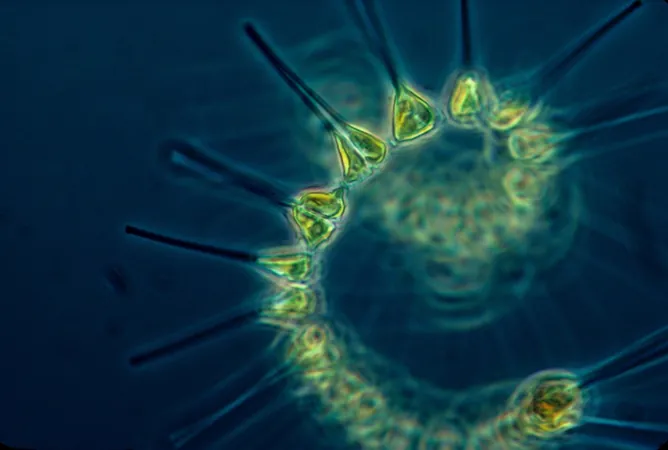
The Shift in Juvenile Idiopathic Arthritis Treatments: Old Drugs Give Way to New Innovations
2024-10-24
Author: Rajesh
Introduction
In a significant shift in the management of juvenile idiopathic arthritis (JIA), the use of traditional synthetic medications has plunged by 50% from 2000 to 2022. This dramatic change is largely attributed to the increasing favor towards targeted therapies, including biologics and Janus kinase (JAK) inhibitors, as indicated by a thorough analysis of commercial insurance claims.
Evolution of Treatment Options
In the early 2000s, conventional disease-modifying anti-rheumatic drugs (DMARDs) dominated the market, making up a staggering 89.5% of new prescriptions. Fast forward to 2022, and these old-line medications only accounted for 43.2%. The landscape of JIA treatment has evolved, with innovative therapies reshaping how medical professionals approach this complex condition, as published in the journal Arthritis & Rheumatology.
Popularity of TNF Inhibitors
Historically, tumor necrosis factor (TNF) inhibitors surged in popularity following their introduction, peaking around the year 2008 when adalimumab (Humira) received its first approval for JIA. Despite this, prescriptions for TNF inhibitors have declined, dropping to just 27.8% of new scripts by 2022. Meanwhile, a new wave of biologic therapies is gaining traction. Notably, drugs categorized as “other” biologic DMARDs—including selective T-cell costimulation modulators and interleukin inhibitors—claimed 17.3% of the new DMARD prescriptions in 2022, with ustekinumab taking the lead among these options.
Introduction of JAK Inhibitors
One of the most striking developments is the introduction of JAK inhibitors into the treatment regimens. Initially, tofacitinib (Xeljanz) entered the market without a JIA indication in 2012, but subsequent approvals of other JAK inhibitors have led to their use climbing to 6.8% of new DMARD starts by 2022.
Study Overview
The study drew on data from the Merative MarketScan Commercial Claims and Encounters database, encompassing 20,258 new DMARD prescriptions for 13,696 children diagnosed with JIA. With a median age of 14 years—two-thirds of whom were female—this population exhibited a complex interplay of comorbidities, with 21% also diagnosed with psoriasis and 7.5% with uveitis.
Current Landscape of Treatments
Despite the shift towards new therapies, adalimumab remains a powerhouse in second-line treatments, accounting for a staggering 77.8% of first prescriptions for targeted drugs among patients previously treated with conventional DMARDs. While etanercept (Enbrel) once held a significant share, its usage has dramatically decreased to below 10% as of 2022.
Conclusion
The emergence of effective treatment options for JIA is a promising development for patients, parents, and healthcare providers alike. However, researchers emphasize the need for further studies to evaluate long-term efficacy and safety of these newer agents amid an evolving therapeutic landscape. What's clear is that the treatment of JIA continues to transform, with novel approaches paving the path for better patient outcomes.
Looking Ahead
This evolving paradigm underscores the importance of ongoing research and investment in pediatric rheumatology, as it not only enhances understanding but also optimizes care for children facing this challenging diagnosis. As we look ahead, the prospect of even more breakthroughs in JIA therapies is on the horizon—stay tuned!



 Brasil (PT)
Brasil (PT)
 Canada (EN)
Canada (EN)
 Chile (ES)
Chile (ES)
 España (ES)
España (ES)
 France (FR)
France (FR)
 Hong Kong (EN)
Hong Kong (EN)
 Italia (IT)
Italia (IT)
 日本 (JA)
日本 (JA)
 Magyarország (HU)
Magyarország (HU)
 Norge (NO)
Norge (NO)
 Polska (PL)
Polska (PL)
 Schweiz (DE)
Schweiz (DE)
 Singapore (EN)
Singapore (EN)
 Sverige (SV)
Sverige (SV)
 Suomi (FI)
Suomi (FI)
 Türkiye (TR)
Türkiye (TR)